Conversation for children 5-9 years old: "Lev Nikolayevich Tolstoy" with a presentation
Conversation for children 5-9 years old: "Lev Nikolayevich Tolstoy"
Dvoretskaya Tatyana Nikolaevna, GBOU School No. 1499 TO No. 7, educatorDescription: The event is intended for children of senior preschool and primary school age, preschool teachers, primary school teachers and parents.
Purpose of work: The conversation will introduce children to the great Russian writer Leo Tolstoy, his work and personal contribution to children's literature.
Target: introducing children of senior preschool and primary school age to the world of book culture.
Tasks:
1. to acquaint children with the biography and work of the writer Leo Tolstoy;
2. to introduce children of senior preschool and primary school age to literary works;3. to form emotional responsiveness to a literary work;
4. educate children's interest in the book and its characters;
Attributes for games: rope, 2 baskets, dummies of mushrooms, a hat or mask - Bear.
Preliminary work:
- Read fairy tales, stories, fables of Leo Tolstoy
- Organize an exhibition of children's drawings based on read works
Introduction in verse
Dvoretskaya T.N.big soul man
Leo Nikolaevich Tolstoy.
The famous writer is talented from God.
A wise teacher with the soul of a teacher.
He was a generator of bold ideas.
The school was opened for peasant children.
Lev Nikolayevich is a great thinker.
Ancestor, philanthropist.
Noble family, count bloodlines.
He thought about the troubles of ordinary people.
Left behind a legacy
Knowledge has become an encyclopedia.
His work and experience is an invaluable asset.
For many generations, he became the foundation.
The writer is famous, and in the 21st century
We are proud to tell you about this man!
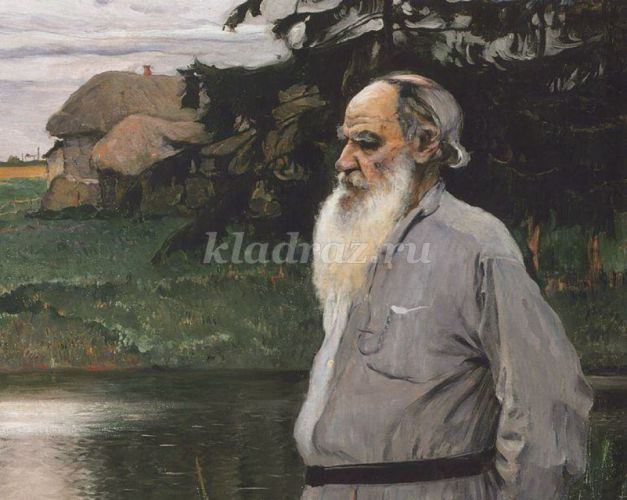
Conversation flow:
Presenter: Dear guys, today we will meet an amazing person and a great writer.
(Slide #1)
Near the city of Tula there is such a place as Yasnaya Polyana, where on September 9, 1828, the great Russian writer Leo Tolstoy was born. He was the fourth child in a large noble family. His mother, Princess Maria Nikolaevna Volkonskaya. His father, Count Nikolai Ilyich, traced his lineage to Ivan Ivanovich Tolstoy, who served as governor under Tsar Ivan the Terrible.
(Slide #2)
The childhood years of the little writer passed in Yasnaya Polyana. Leo Tolstoy received his primary education at home, he was given lessons by French and German teachers. He lost his parents early. Leo Tolstoy's mother died when he was one and a half years old, and his father died when the boy was in his ninth year. Orphaned children (three brothers and a sister) were taken in by their aunt, who lived in Kazan. She became the guardian of the children. Leo Tolstoy lived in the city of Kazan for six years.
In 1844 he entered Kazan University. Classes in the program and textbooks weighed him down and after studying for 3 years, he decides to leave the institution. Leo Tolstoy left Kazan for the Caucasus, where his older brother Nikolai Nikolaevich Tolstoy served in the army as an artillery officer.
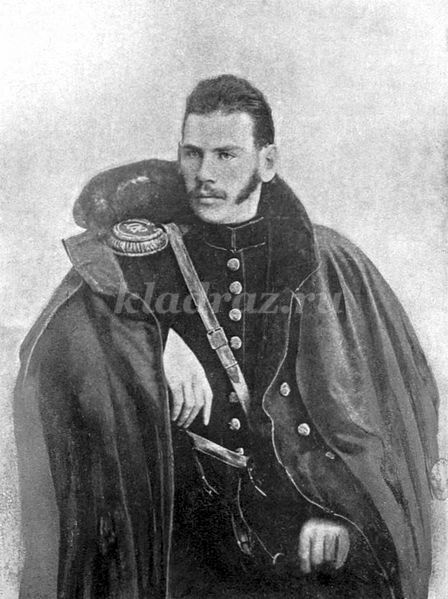
The young Leo Tolstoy wanted to test himself whether he was a brave man and see with his own eyes what war is. He entered the army, at first he was a cadet, then after passing the exams, he received a junior officer rank.
Lev Nikolaevich Tolstoy was a participant in the defense of the city of Sevastopol. He was awarded the Order of St. Anne with the inscription "For Courage" and medals "For the Defense of Sevastopol.
Russian people have long praised courage, bravery and courage.
Listen to what sayings were composed in Russia:
Where there is courage, there is victory.
Don't lose courage, don't step back.
The soldier's business is to fight bravely and skillfully.
Who has not been in battle, he did not experience courage.
Now we will check how brave and brave our boys are.
Exit to the center of the hall. The game is played: Tug of war.
Leo Tolstoy traveled abroad twice in 1850 and in 1860.
(Slide #3)
Returning back to Yasnaya Polyana, Leo Tolstoy's family estate opens a school for serf children. At that time, there was serfdom in the country - this is when all the peasants obeyed and belonged to the landowner. Previously, even in the cities there were not many schools, and only children from rich and noble families studied in them. People lived in the villages and they were completely illiterate.

Leo Nikolayevich Tolstoy announced that the school would be free and that there would be no corporal punishment. The fact is that in those days it was customary to punish children, they were beaten with rods (a thin twig) for bad behavior, for the wrong answer, for not learning a lesson, for disobedience.
(Slide number 4)
At first, the peasants shrugged their shoulders: where is it seen that they taught for free. People doubted whether such lessons would be of any use if not to flog a mischievous and lazy child.
In those days, there were many children in peasant families, 10-12 people each. And they all helped their parents with the housework.

But soon they saw that the school in Yasnaya Polyana was unlike any other.
(Slide number 5)
“If,” L.N. Tolstoy wrote, “the lesson is too difficult, the student will lose hope of fulfilling the task, will take up another, and will not make any efforts; if the lesson is too easy, it will be the same. It is necessary to try so that all the attention of the student can be absorbed by the given lesson. To do this, give the student such work so that each lesson feels like a step forward in learning.
(Slide number 6)
About the power of knowledge, folk proverbs have survived and survived to this day:
From time immemorial, the book raises a person.
Good to teach who listens.
Alphabet - the wisdom of the step.
Live and learn.
The world is illuminated by the sun, and man by knowledge.
Without patience there is no learning.
Learning to read and write is always useful.
(Slide number 7)
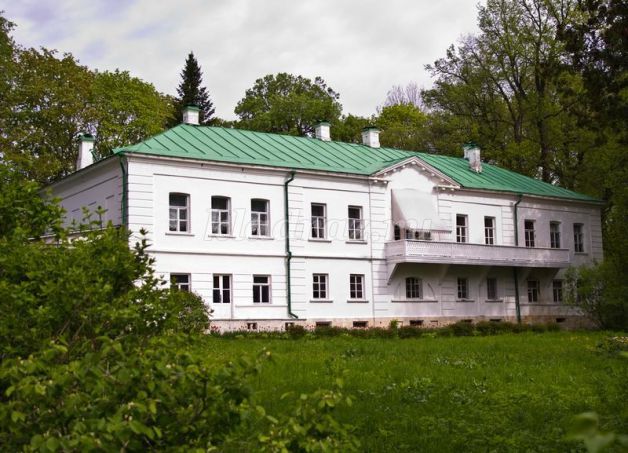
At the Tolstoy school, the children learned to read, write, count, they had lessons in history, natural science, drawing and singing. Children felt at school freely and cheerfully. In the classroom, little students sat down wherever they wanted: on benches, on tables, on the windowsill, on the floor. Everyone could ask the teacher about anything they wanted, talked to him, consulted with neighbors, looked into their notebooks. The lessons turned into a general interesting conversation, and sometimes into a game. There were no homework assignments.
(Slide number 8)
During the breaks and after classes, Leo Tolstoy told the children something interesting, showed them gymnastic exercises, played games with them, ran a race. In winter, he rode with children on sleds from the mountains, in summer he took them to the river or to the forest for mushrooms and berries.

(Slide number 9)
Come on guys, and we will play a game: "Mushroom pickers"
Rules: Children are divided into 2 teams, each team has 1 basket. On a signal, the children gather mushrooms.
Condition: Only 1 mushroom can be taken in hand.
Music sounds, children pick mushrooms and put them in their common team basket.
The music stops, a bear enters the clearing (begins to roar), mushroom pickers freeze and do not move. The bear bypasses the mushroom pickers, if the mushroom picker moves, the bear eats him. (The eaten mushroom picker is put on a chair). At the end of the game, the mushrooms in the baskets are counted. The winner is the team that has collected the most mushrooms and who has the most mushroom pickers in the team remained safe and sound.
(Slide number 10)
At that time there were few books for children. Leo Tolstoy decides to write a book for children. The alphabet was published in 1872. In this book, Lev Nikolaevich collected the best fairy tales, fables, proverbs, stories, epics and sayings. Little instructive works make children all over the world sympathize and worry, rejoice and grieve.
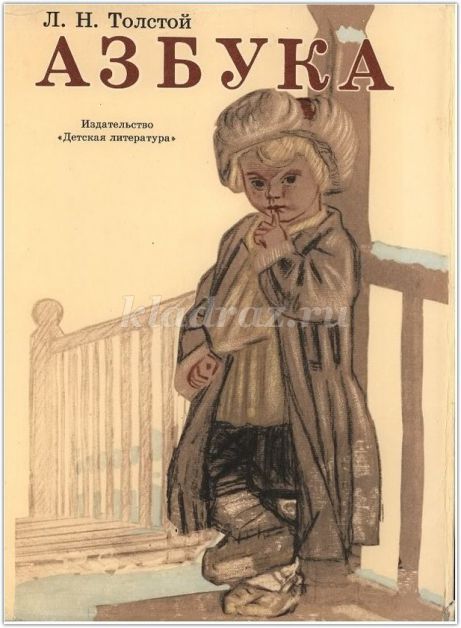
(slide number 11)
The works written by Leo Nikolayevich Tolstoy contain useful and wise advice, teach to understand the world around us and relationships between people.
(Slide number 12)
Creativity of Leo Tolstoy is a real pantry for children. Children are small and attentive listeners who learn love, kindness, courage, justice, resourcefulness, honesty.
Children are strict judges in literature. It is necessary that the stories for them be written both clearly, and entertaining, and morally ... Simplicity is a huge and elusive virtue.
L.N. Tolstoy.
(Slide number 13)
Lev Nikolaevich Tolstoy was a master of inventing different games and amusements for children. Here are some of them. Try to guess guys, interesting riddles.
He walks along the sea, but when he reaches the shore, he disappears. (Wave)
There is a mountain in the yard, and water in the hut. (Snow)
He bows, bows, he will come home - he will stretch. (Axe)
Seventy clothes, all without fasteners. (Cabbage)
Grandpa is building a bridge without an axe. (Freezing)
Two mothers have five sons. (Arms)
Twisted, tied, dancing around the hut. (Broom)
He is wooden, and the head is iron. (A hammer)
Every boy has a closet. (Signet)
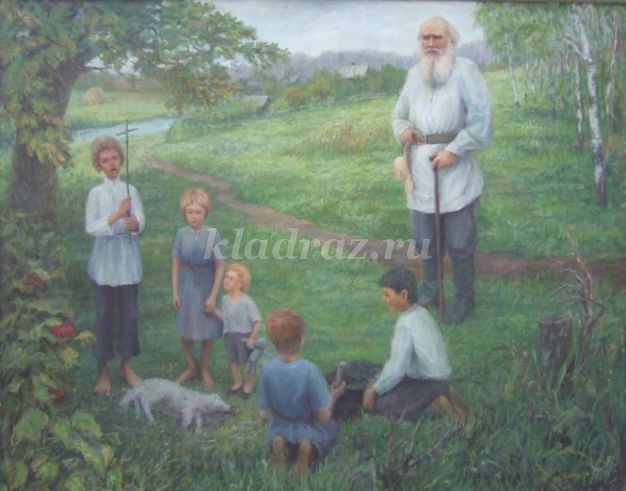
(Slide number 14)
Leo Nikolayevich Tolstoy wrote sayings for children.
Where there is a flower, there is honey.
Unknown friend, not good for services.
Help your friend as much as you can.
The bird is red with the feather, and the man with the mind.
A drop is small, but drop by drop the sea.
Do not take a handful, but take a pinch.
If you want to eat kalachi, don't sit on the stove.
Summer gathers, winter eats.
Know how to take, know how to give.
You can't learn everything right away.
Learning is light, not learning is darkness.
The end is the crown.
Presenter: Well, at the end of our event we invite you to play an outdoor game:
"Golden Gate".
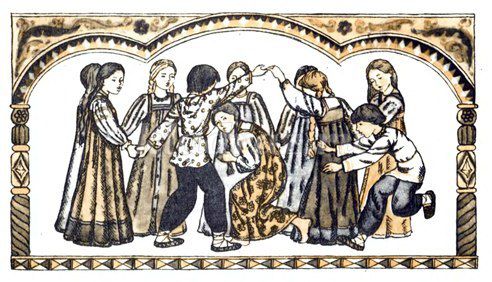
Rules of the game: The two leaders join hands and build a “gate” (raise their closed hands up). The rest of the players join hands and begin to dance, passing under the "gate". The circle dance cannot be broken! You can't stop!
All the chorus players say the words (singing)
"Golden Gate, come in, gentlemen:
Saying goodbye for the first time
The second time is forbidden
And the third time we will not miss you!
When the last phrase sounds, “the gates close” - the leaders lower their hands and catch, lock those participants in the round dance who are inside the “gate”. Those who are caught also become "gates". When the "gates" grow to 4 people, you can separate them and make two gates, or you can leave just a giant "gate". If there are not enough “gentlemen” left in the game, it is advisable to come under the gate moving like a snake. The game usually goes up to the last two players not caught. They become new leaders, form new gates.
(Slide #14 and #15)
Thank you for your attention! See you soon!
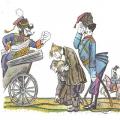 “Lefty” - a summary of the work N
“Lefty” - a summary of the work N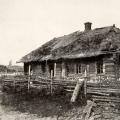 Turgenev, "Biryuk": a summary
Turgenev, "Biryuk": a summary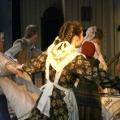 Comedy A.N. Ostrovsky "Poverty is not a vice": a summary of the work
Comedy A.N. Ostrovsky "Poverty is not a vice": a summary of the work